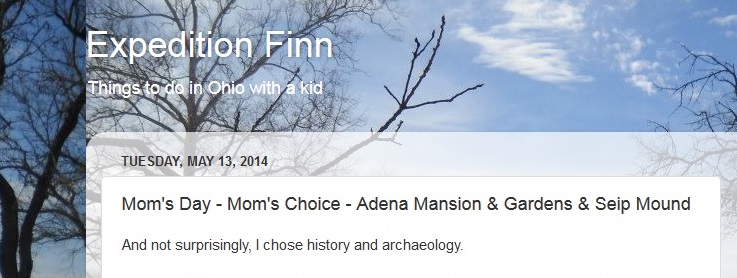Sara Nuber Thomas, in her blog Expedition Finn: things to do in the wild with a kid, describes how visiting the restored Seip Mound was a “profound moment” in her life. It didn’t seem to matter that the mound had been restored, what mattered was its imposing presence on the landscape: “I was hot, sticky and tired but I’m cruising’ down St Rt 50, window’s down, tunes blasting and I see this structure looming over the landscape. I’m pretty sure I said ‘What the hell?’ So I turned around and drove into the parking lot. There was no one there. I read the signs, walked around the marked post holes of where once stood a Hopewell dwelling and then I approached the mound. Since it was the end of the day, I sat up on top of the mound and watched the sun go almost all the way down. It was a profound moment in my life. Truth be told, whenever I want to find a happy place, it’s oftentimes here. On top of this huge mound.” OK, so this is more of an anecdote than a case study and Sara is a volunteer with us here in the Archaeology Department, so she’s not exactly a disinterested party in the discussion — but actually, that’s part of the point. The experience of visiting Seip Mound twenty or so years ago is one of reasons she volunteers with us today. Sara’s story reaffirms for me the conviction that restored earthworks have a role to play in public education. They can resuscitate the past and be a real inspiration to visitors.
It didn’t seem to matter that the mound had been restored, what mattered was its imposing presence on the landscape: “I was hot, sticky and tired but I’m cruising’ down St Rt 50, window’s down, tunes blasting and I see this structure looming over the landscape. I’m pretty sure I said ‘What the hell?’ So I turned around and drove into the parking lot. There was no one there. I read the signs, walked around the marked post holes of where once stood a Hopewell dwelling and then I approached the mound. Since it was the end of the day, I sat up on top of the mound and watched the sun go almost all the way down. It was a profound moment in my life. Truth be told, whenever I want to find a happy place, it’s oftentimes here. On top of this huge mound.” OK, so this is more of an anecdote than a case study and Sara is a volunteer with us here in the Archaeology Department, so she’s not exactly a disinterested party in the discussion — but actually, that’s part of the point. The experience of visiting Seip Mound twenty or so years ago is one of reasons she volunteers with us today. Sara’s story reaffirms for me the conviction that restored earthworks have a role to play in public education. They can resuscitate the past and be a real inspiration to visitors.